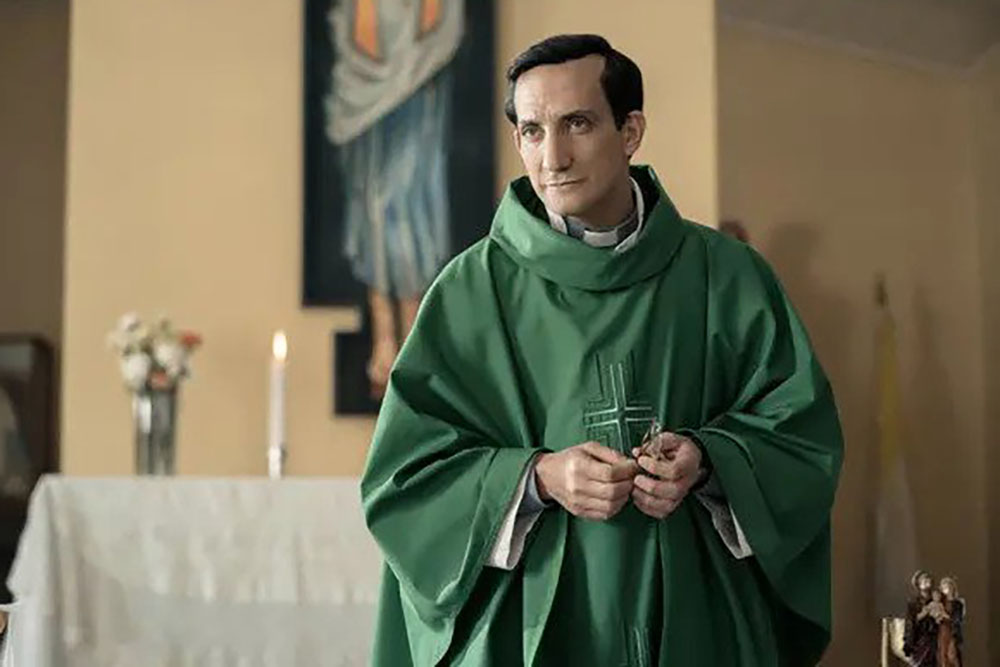“The Two Popes” is currently available to watch on Netflix via subscription.
I am pleased that I took the time out of my day to watch “The Two Popes.” Created in 2019 and directed by Fernando Meirelles, the film follows Pope Benedict XVI in the aftermath of the Vatican leaks scandal, where many Vatican documents were leaked exposing corruption and the blackmailing of homosexual individuals outside the Church. The scandal originates with the arrest of Paolo Gabriele, the pope’s former personal butler. The film follows Joseph Ratzinger, Pope Benedict XVI, as he considers abdicating the papacy.
At the same time, Cardinal Jorge Bergoglio contemplates resigning his position as archbishop. By the end of his papacy, Ratzinger is being vilified by the public for covering up the scandal; he turns to Bergoglio to share his confidences. Although the two have very different political opinions, the two popes form an unlikely bond to become lifelong friends.
“The Two Popes” begins with the election of the next pope after Pope John Paul II passes away. German Cardinal Joseph Ratzinger is elected and Cardinal Jorge Bergoglio is the runner-up with the second most votes. It is clear that Bergoglio does not want to be pope, since he believes no good can come from it. The film primarily takes place in Italy in 2012 during the aftermath of the Vatican Leaks Scandal.
Meanwhile, Pope Benedict XVI is confronts the incriminating Vatican scandal which has essentially tarnished his reputation. Because of his choice to coverup the scandal instead of addressing it, Benedict decides to abdicate the papacy. As Ratzinger’s image becomes tainted, Bergoglio submits his resignation as Cardinal to the Vatican from whom he receives no response.
As he is ready to leave for Rome to personally resign, Bergoglio is summoned to Vatican City. He meets with Benedict at the pope’s summer residence. The pope and Cardinal Jorge Bergoglio discuss the current situation at Vatican City, The Palace of Castel Gandolfo, and the Sistine Chapel.

Getting to know each other, the two discuss various topics, delaying their discussion of Bergoglio’s resignation. It later becomes apparent that Bergoglio was originally married and had intended to pursue a different life. Inspired by the Church, he broke off his engagement and joined the Jesuits. Initially, the story is interesting and very inspirational, but the continuing conversation between Bergoglio and Benedict becomes tedious. It was interesting to learn about Bergoglio’s background and his reasons for joining the Church, as we see a young Bergoglio, and how he became involved with the Church. But at some points in the film, it seems as if the dialogue continued forever.
However, the dialogue in this film is one of its high points. Anthony Hopkins does a fantastic job of portraying Pope Benedict XVI, and Jonathan Pryce does a convincing job of playing Cardinal Jorge Bergoglio. The conversations between Benedict and Bergoglio are for the most part interesting; it is fascinating to learn why each wants to retire from the Clergy. The relationship between Benedict and Bergoglio is charming…it is nice to see the two become old friends. It almost makes you forget that huge scandal that confronts the Church. In a scene at the Palace of Castel Gandolfo, instead of addressing Bergoglio’s resignation, the two watch “Kommissar Rex,” an Austrian-Italian TV show. Had the Church had not been exposed for corruption and the blackmailing of homosexual clergy members, then the interaction between the two would have been a pleasure to watch.
Unlike other films I have watched in the past, I thoroughly enjoyed this one. If the story does not garner interest, “The Two Popes” is worth watching for the cinematography alone. The camerawork in this film is simply beautiful. Led by cinematographer César Charlone, “The Two Popes” is worth watching just for the breathtaking views of the Sistine Chapel, the Palace of Castel Gandolfo, and the Vatican.
One powerful scene occurs in the beginning, with the Church electing a new pope after John Paul II’s passing. As the Cardinals sit side-by-side in Vatican City, they write a name whom they would like to elect to be the next pope. In this scene, the camera quickly switches from the clicking of the archbishop’s pens and the election of the new pope in the Vatican. During this, we see white and black smoke emit from the roof of the building, signifying the election of a new pope. There are many other scenes that are exquisite: for example, the scene at the Palace of Castel Gandolfo, where Cardinal Jorge Bergoglio officially asks Pope Benedict if he can retire.
The soundtrack in this film is not notable. As I began watching this film, I was not expecting a soundtrack that would be exceptional. Unless the film you are watching is a biopic about a musician, like “Bohemian Rhapsody” (2018), then the soundtrack should not be a main selling point of the film. However, Fernando Stutz is the Chief Editor of this film; he and his team did a fantastic job of editing this film together.
“The Two Popes” is not a must-see film, but I would definitely recommend it. As I approached this movie, I was expecting something more along the lines of “Spotlight” (2015), which highlights the widespread child sexual abuse cases by numerous Roman Catholic Priests. But, even though the movie did not fulfill my expectations, it is a satisfying watch nonetheless. If you have a Netflix account, I would gladly recommend “The Two Popes.”